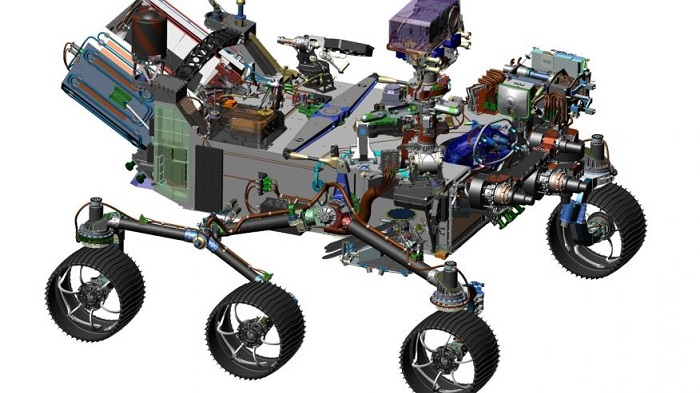NASA`s next Mars rover will `seek the signs of life` on red planet

The rover’s main job will be to “seek the signs of life” and try to answer the question of whether or not we’re alone, Kenneth Farley, a project scientist on the Mars 2020 team, said. Mars today is very different than it was over 3.5 billion years ago, a time when the planet was warmer and wetter and thus more conducive for life, so the new project will focus on studying that era.
The nuclear-powered rover will be capable of taking core samples of the planet, which it will drop off in caches as it goes. Those samples could someday be returned to Earth for analysis.
The craft, which will weigh about 2,300 pounds, is expected to have a dramatic, high-tech entry to the planet, Allen Chen, the project lead on the craft’s entry, descent, and landing, said. It will be traveling 11,000 mph when it arrives at Mars, and will eventually be lowered onto the surface by sky crane, like Curiosity was.
But this rover will be smarter, Chen said. It will be able to figure out on its own the optimal time to deploy the parachute, giving it more precision with its landing. It will also be able to take pictures as it descends and compare those to an onboard map, a system called Terrain Relative Navigation. Cameras will not only capture the descent, but peer up at the parachute as well.
The craft will also have thicker, more robust wheels than Curiosity, NASA said, but will resemble that craft— which is currently exploring Mars— in general.
Farley said that they had narrowed the landing sites to eight different choices, with half of locations being places where surface water once flowed, the traces of which are “recorded in the rocks.”
In addition to a myriad of instruments, including a laser, the rover will also have microphones on it, hopefully giving people the chance to one day hear what it’s like on Mars.
"This will be a great opportunity for the public to hear the sounds of Mars for the first time, and it could also provide useful engineering information," Matt Wallace, the Mars 2020 deputy project manager, said in a statement.















































